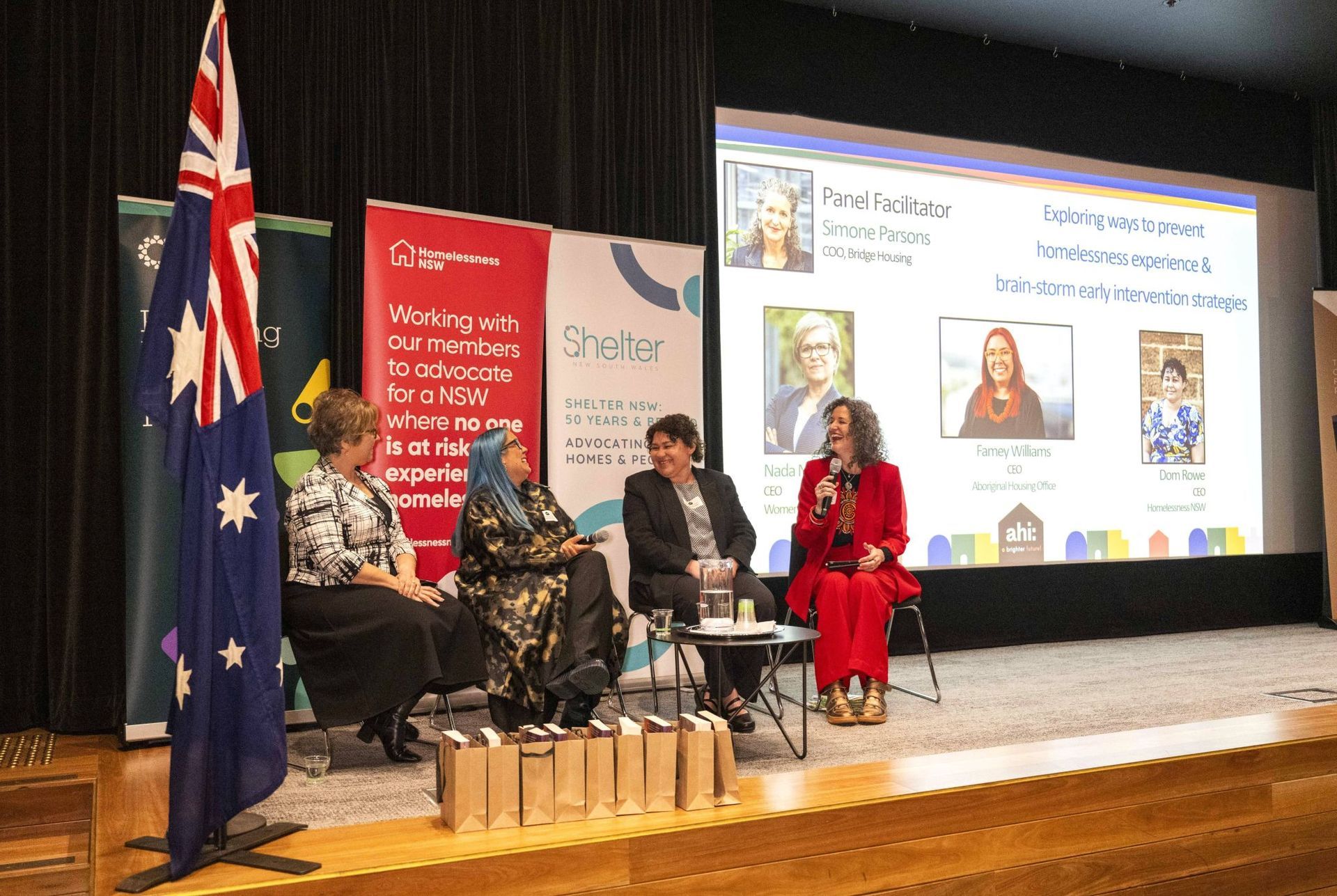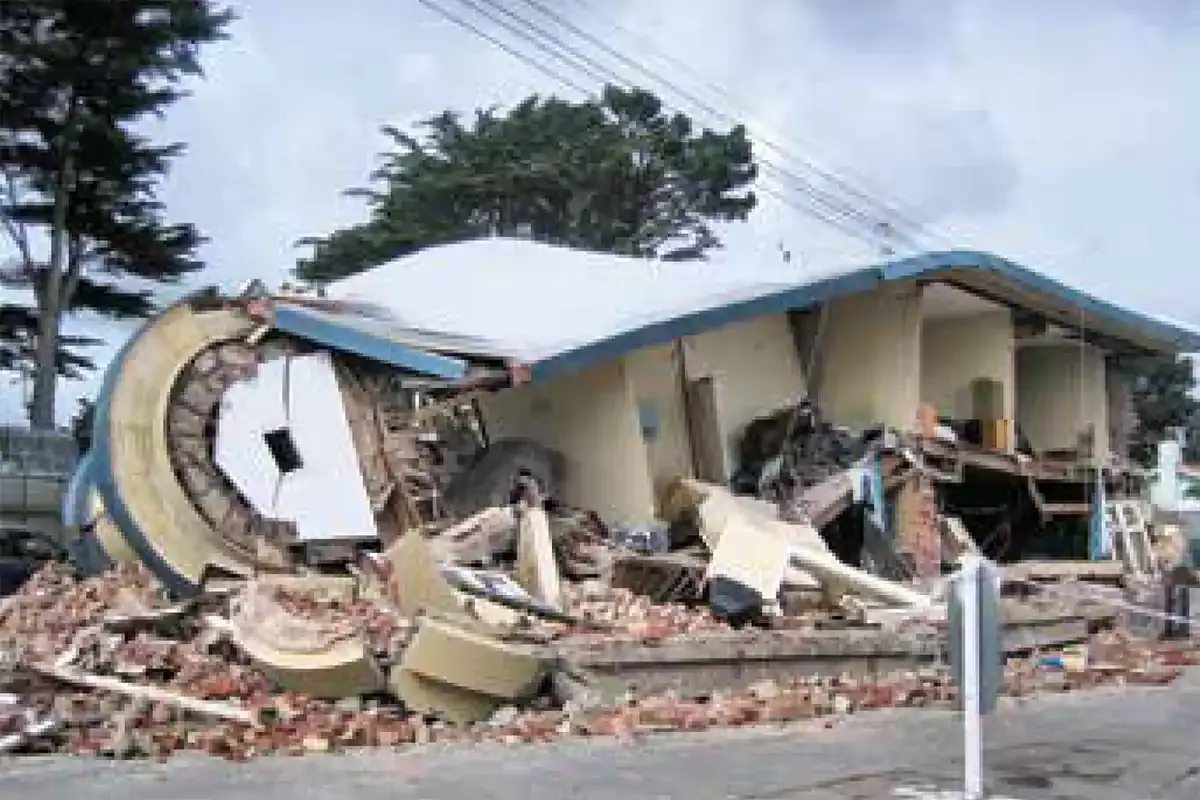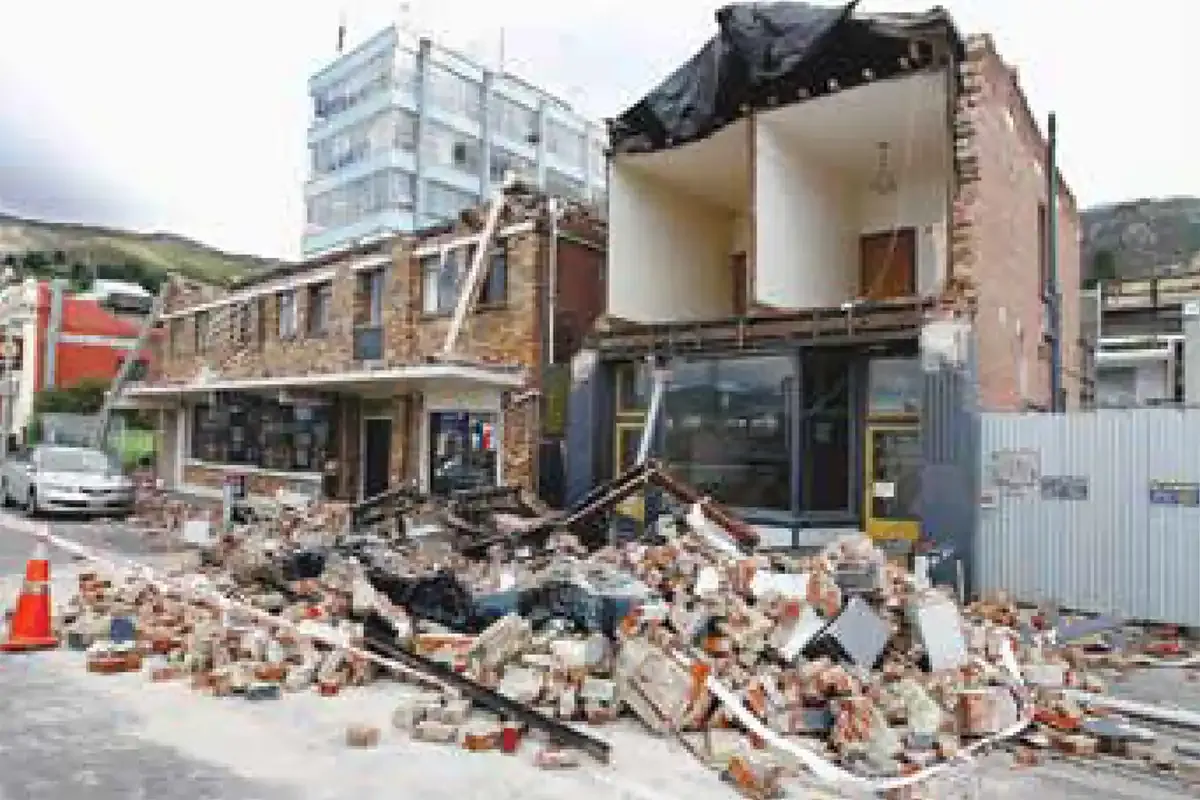ahi: President Sean Kelly selects an article from the HousingWORKS print archive for our readers to revisit. Here, we travel back to March 2015 where we charted the progress of the Christchurch rebuild following the earthquakes that razed the city in 2010 and 2011.
The series of devastating earthquakes that hit Christchurch in 2010 and 2011 have impacted hugely on social housing in the Canterbury region with more than 95% of Housing New Zealand’s 6,200 properties damaged.
The earthquakes started with a 7.1 magnitude event in September 2010, followed by another major quake on 22nd February 2011. This second quake was located near the central city and killed 185 people. It also destroyed hundreds of buildings and altered the city’s appearance and fabric forever.
Thousands of aftershocks, many of them also damaging, continued to strike the Canterbury region after the initial shakes commenced.
Housing New Zealand’s Canterbury stock was badly hit with many properties deemed uneconomic to repair. Others were located in a massive block of severely damaged land known as the ‘red zone’’ and were later demolished. Thousands more required repairs so they could continue to be safe for tenants.
"The series of devastating earthquakes that hit Christchurch in 2010 and 2011 have impacted hugely on social housing in the Canterbury region with more than 95% of Housing New Zealand’s 6,200 properties damaged."
The government charged Housing New Zealand with delivering a comprehensive programme of work that would see up to 5,000 earthquake-damaged properties repaired and up to 700 new homes built.
The programme involves over $300 million in building repairs and construction. When completed by the end of 2015, this will restore its Christchurch housing stock to pre-earthquake levels.
An earthquake recovery team was formed to handle the huge job of co-ordinating urgent repairs and ensuring tenants were looked after, as well as recruiting contractors and beginning coordination of the programme of repairs and new builds.
"The programme involves over NZD$300 million in building repairs and construction."
Paul Commons was appointed General Manager of the Canterbury Earthquake Recovery Programme in 2013. Today, he still leads a team of staff that includes contractors, architects and other professionals.
Around 1,000 workers are involved in Housing New Zealand’s programmes in Christchurch. Repairs are organised on a suburb-by-suburb, street-by-street basis as much as possible to make it easier for both contractors and tenants.
The team includes a group of tenancy liaison staff whose role is to support tenants requiring repairs at their properties. In many cases, tenants can continue living in their home while repairs are done but often it is easier for them to be temporarily relocated to alternative accommodation.
Housing New Zealand arranges furniture storage, rubbish removal, transport and other support. Every effort is taken to minimise disruption for tenants during repairs, which can be inconvenient and stressful.
Paul Commons said repairing earthquake-damaged properties is a key part of the overall programme and provides an opportunity to improve the quality of its social housing stock in the region. Floor coverings, ventilation, heating, insulation and other upgrades have been incorporated into the repair programmes.
Housing New Zealand has separated the repair programme into two streams of activity. The minor repair programme (usually between NZD$12,000 and NZD$25,000) averages around 200 completed repairs each month. The major programme covers more complicated and expensive repairs of $80,000 and upwards. At the peak of construction this year, between 25 and 30 major property repairs were being completed each month.
The average construction cost on each property is $89,000, which includes earthquake repairs, maintenance and upgrades where required.
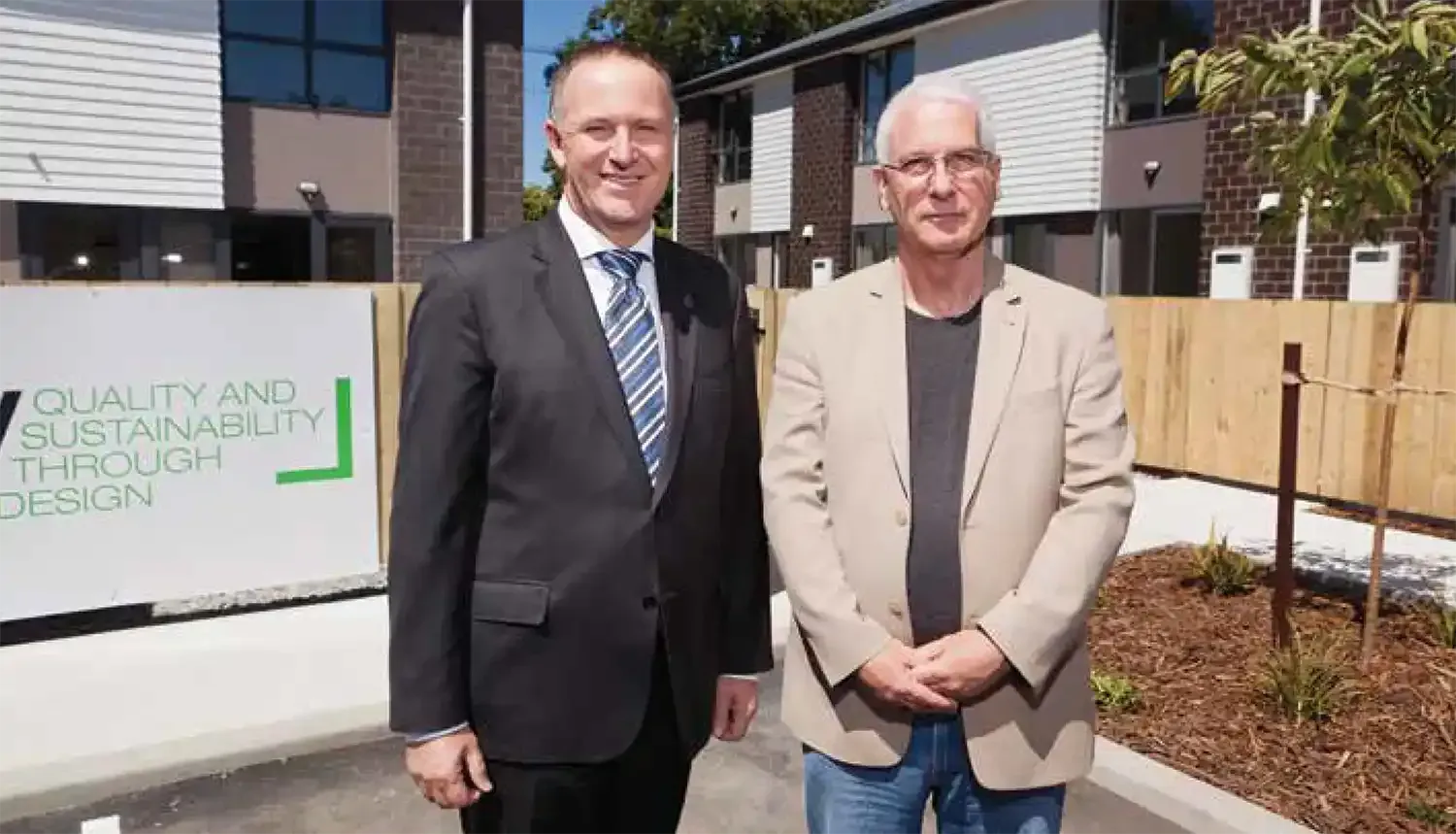
Paul is encouraged by the repairs being completed ahead of schedule at the start of what will be the busiest year for Housing New Zealand in Christchurch. It is also on track to complete the construction of up to 700 new homes across greater Christchurch by the end of 2015.
According to Paul, there are many moving parts to the programme but a well co-ordinated management style across different arms of Housing New Zealand, as well as its contractors, building partners and tenants, meant the programme tracked well and was on schedule to achieve the challenging targets set by the government.
Both targets – repairs on up to 5,000 properties and the construction of up to 700 new homes – are to be completed by the end of 2015. As of mid-February this year, there had been 3,300 completed repairs and 150 new homes built across the city.
The new builds programme is helping to modernise Housing New Zealand’s stock across the city with new warm, dry homes under construction throughout Christchurch. Tenants from the city’s western areas such as Riccarton, through to communities in the city’s east like Aranui and Shirley (which sustained some of the worst damage in the earthquakes), are getting new social housing.
An example of a new development is at Addington’s Church Square. Three separate sections, that formerly each accommodated a three-bedroom house, were amalgamated into one title and 10 new two-bedroom homes were built on the enlarged site.
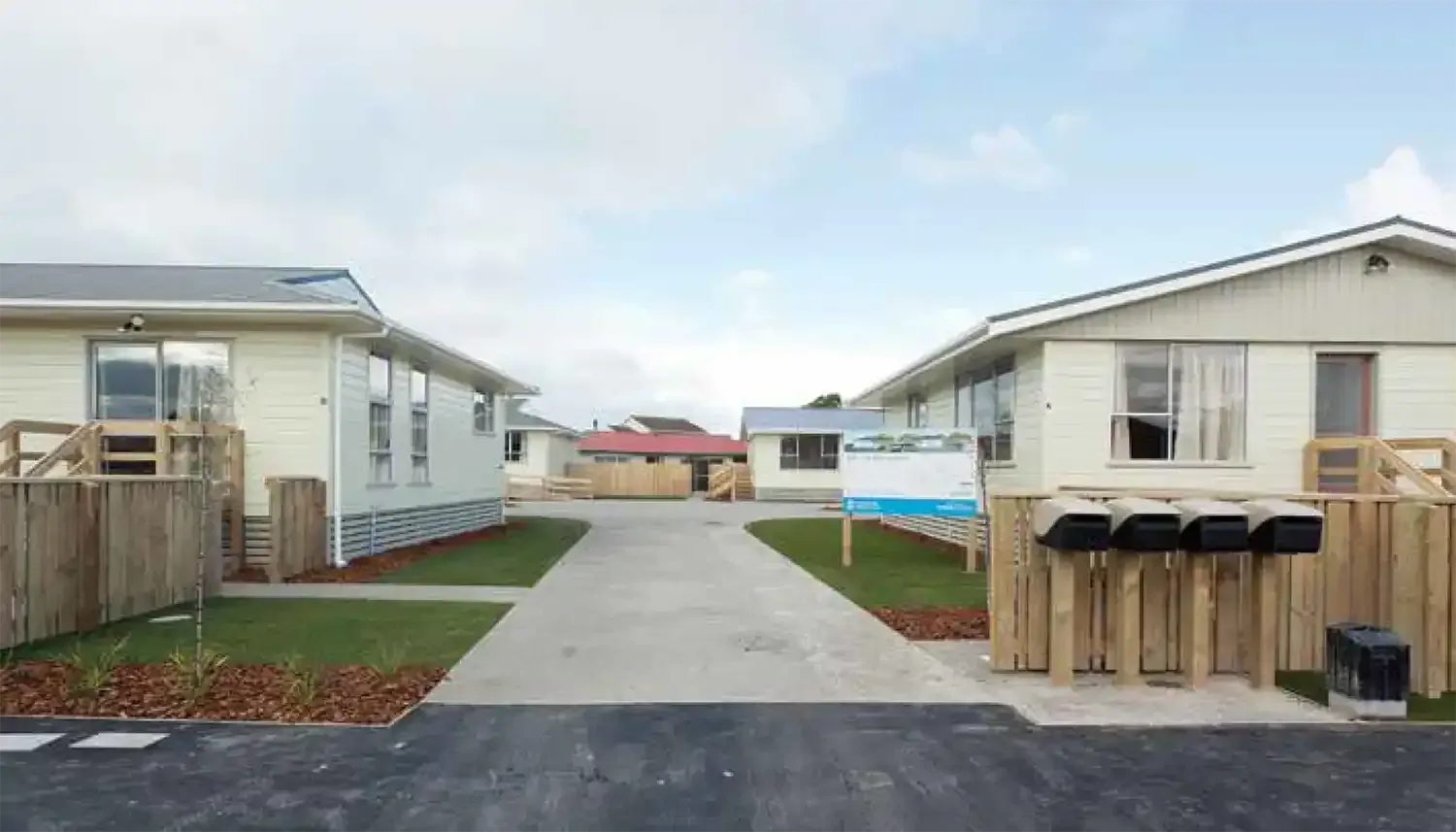
Late last year, New Zealand Prime Minister John Key visited this new development. He was very impressed with the quality of the housing and also spoke to a happy tenant, Paul Meek, who said he was thrilled to have been offered a brand new home.
“I just love it,’’ Paul told the Prime Minister.
Another tenant enjoying their home is Karen Mehlhopt, who moved into one of the new Housing New Zealand properties in Hallswell in the city’s south-west late last year. She feels “absolutely blessed’’ to have been offered the property and cannot speak highly enough about the experience.
Karen previously lived in an older three-bedroom house in the city’s north-west but, after one of her sons left the family home, she approached Housing New Zealand to see if she could be moved to a smaller property. Within weeks of chatting with her tenancy manager, Karen and her other son had moved into their brand new house.
She still vividly recalls her first visit to the house. “As soon as I saw it, I totally fell in love,’’ said Karen.
Older properties are also getting plenty of attention in the earthquake recovery programme. An innovative partnership between Housing New Zealand and the Department of Corrections is already paying dividends.
Over the next few years, earthquake-damaged houses will be transported to Rolleston Prison on the southern outskirts of Christchurch where prisoners, under supervision, upgrade the houses. Prisoners have the chance to upskill their qualifications, raise their self-esteem and keep themselves busy while in prison.
The programme has been dubbed the ‘Second Chance’ scheme. It offers a second chance to the prisoners, some of whom have found building-related jobs after their release, and it’s also a second chance for the houses.
"The earthquakes created a rare opportunity to not only modernise existing homes, but to add more new properties to the region. By the end of 2015, the Canterbury portfolio will be the most up-to-date in the country."
The construction yard at the prison site has about 50 houses either undergoing repairs or waiting to be placed in the main construction yard where work on them can begin. The work includes recladding, rewiring and replumbing the houses. In some cases, the layout of the house is changed so they can be better configured for future tenants.
Over time, 150 homes in need of repair will be taken to Rolleston Prison. Once completed, houses are transported back onto sites where they are connected to services.
Paul Commons said the agency was pleased to be able help provide training opportunities for prisoner while also recycling houses. “At the end we get modern and fit-for-purpose housing for people in need,” he said.
The joint Housing New Zealand and Department of Corrections refurbishment programme has already seen four completely renovated properties moved to an Aranui site where families now enjoy the warm, revitalised homes.
Alongside the repairs and new builds work, the Second Chance programme is part of the overall Canterbury earthquake recovery programme that will ensure much of Housing New Zealand’s stock is new and modern or has undertaken comprehensive repairs and maintenance.
Paul believes the earthquakes have created a rare opportunity to not only modernise existing homes but to add more new properties to the region. By the end of 2015, the Canterbury portfolio will be the most up-to-date in the country.
Post 2015, new social housing will continue to be developed throughout Christchurch as Housing New Zealand further modernises its stock in its ongoing role as a social housing provider.
Share This Article
Other articles you may like
